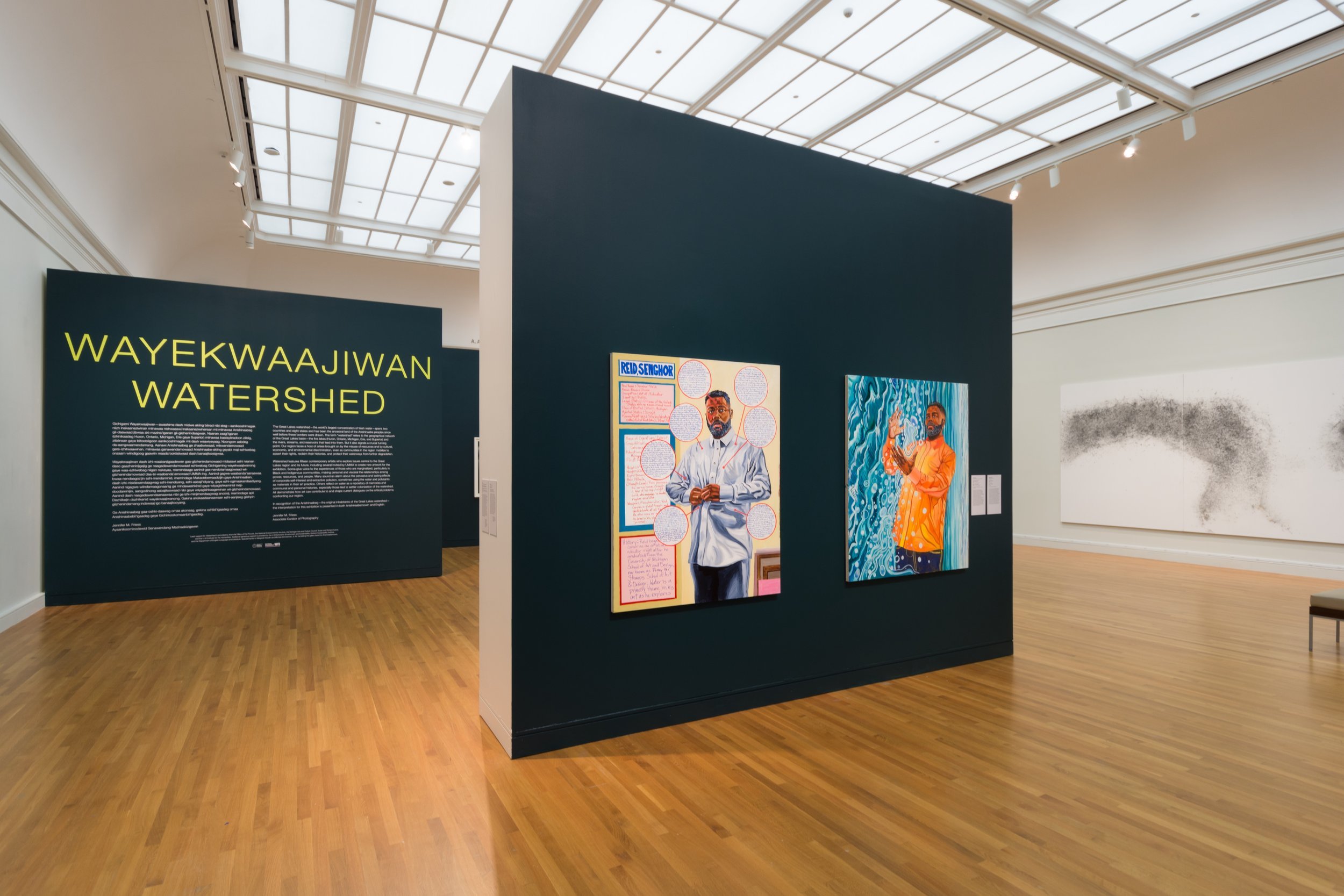Senghor Reid in Watershed at University of Michigan Museum of Art
On View June 4 – October 23, 2022
Ann Arbor, MI — On June 4, the University of Michigan Museum of Art (UMMA) opened an exhibition exploring critical environmental and socio-political issues relating to water through the complex history and contemporary experience of the Great Lakes. The exhibition, titled Watershed, features the work of 15 international and regional artists, including new commissions by Khaled Al-Saa’i, Michael Belmore, Andrea Carlson & Rozalinda Borcil ă, Bonnie Devine, Kate Levy, and Meghann Riepenhoff, as well as new and recent installations and works by Dawoud Bey, Matthew Brandt, LaToya Ruby Fraizer, Doug Fogelson, Cai Guo-Qiang, Shanna Merola, Pope.L, and Senghor Reid. The exhibition captures the impact of water scarcity, pollution, and economic and cultural displacement on the communities of the Great Lakes region, past and present, while also highlighting how those same challenges affect populations across the country. Watershed is curated by Jennifer Friess, Associate Curator of Photography at UMMA, and will remain on view through October 23, 2022. Admission to the exhibition is free.
“The subject of Watershed—the Great Lakes—is incredibly personal to me and one that I have wanted to address in an exhibition for some time as someone who grew up in this region. The Great Lakes are a way of life, and the communities here feel passionately about their social, economic, and cultural importance,” said Friess. “This is in part what makes the watershed such a poignant lens through which to consider many complex issues of our time. From widespread environmental disaster and the displacement of Indigenous communities, to contemporary water tragedies such as the one that continues to grip the town of Flint, the Great Lakes region is a microcosm of much more global discussions around resources. The incredible artists featured in Watershed examine the power of water and the ramifications of corporate and political wrongdoing, while fostering critical dialogues about our environmental and cultural futures.”
The exhibition will be organized around three themes: the impact of pollution on people and the environments in Michigan and throughout the broader region; the historic and contemporary
displacement of Anishinaabe peoples from their ancestral lands; and the potential of water as a source of hope and transformation . Through the artists’ works, which range from experimental photography and video to painting and sculpture, the exhibition surfaces the intertwining personal and communal narratives related to the watershed and the political, corporate, and economic forces that influence them. To acknowledge the Anishinaabe lands on which UMMA sits and the significance of Indigenous voices and experiences within the dialogues explored in Watershed, the exhibition labels and texts will be presented in both English and Anishinaabemowin, marking a first in the museum’s history.
“The artists represented in Watershed probe the ethical and moral dilemmas and potential futures of the Great Lakes region. They find novel ways of representing and helping us see the region’s myriad histories and possibilities,” said Christina Olsen, UMMA’s Director. “The exhibition also reflects our wider vision for UMMA to offer critical support for artists to make new work, and to create space for our publics to engage with ideas and topics relevant to their lives and to national and global conversations. Watershed includes a rich spectrum of artists from our region, those with ties to the watershed, and from across the country further emphasizing a dynamic cross-pollination of ideas and artistic approaches.”
Read the full press release here








SENGHOR REID
Charcoal on paper
22 ¾ × 30 inches